Preserving the Kadazan Language and Culture
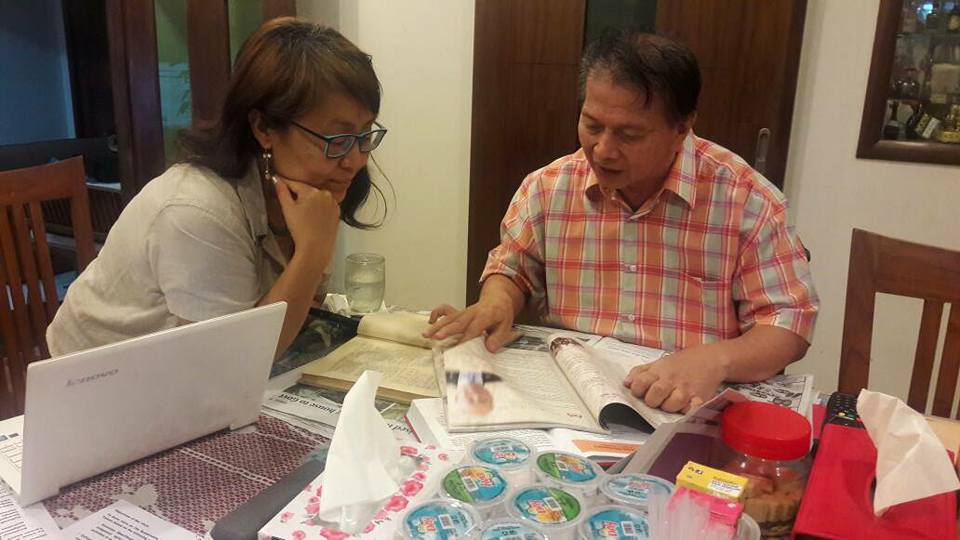
I interviewed President of kadazan Sabah Society (KSS) a few months ago and I had learned and discovered tremendous information from my conversation with Datuk Marcel Leiking.
Here goes:-
If not for the love and concern over the Kadazan language, a foreigner by the name of A. Antonissen would not have documented the first Kadazan dictionary where back in the early years.
This was shared by Datuk Marcel Leiking, a Kadazan residing in Kg Limbanak, Penampang who took courage and great dedication to do another dictionary, being the second one after A Antonissen’s of which was first produced in 1956.
Marcel is the current president of the Kadazan Society Sabah (KSS) who initiated to do the second dictionary after the priest, Father A. Antonissen.
Like Antonissen, Marcel described his work as for the love of his people and he attributed many of the work being done by the dedicated members of KSS for their passions in preserving the legacy before the development ‘overrule’ its existence.
“We ought to know our language as it symbolises our identity and culture. What Antonissen did was rightful move and we owed our life to him for preserving the language through the book (dictionary).
Marcel extracted some of the messages written by Antonissen in his forwarded message printed in the dictionary:-
“The history of this book is quite simple. When I arrived in North Borneo in 1932, and was detailed to work among the Kadazans in Penampang and surrounding villages, I found out that there was no grammar or dictionary of the Penampang Kadazan of which I could avail myself in study of that language. I was told to go out and mingle with the people and in this way to just ‘pick up’ the language as others had done before me.
In order to save time, I copied the most ordinary everyday words from my English dictionary and gathered their Kadazan equivalent from the people who knew some English. That was the beginning of this book.
Later on I formed the habit of jotting down new words I came across in my conversation with the people, and so my dictionary grew to its present form and size.
This is the first Kadazan dictionary being printed. In so far as a dictionary can claim its originality this book is certainly original as I collected all the words myself and arranged them in alphabetical order.
When we were interned by the Japanese in 1942, I took the dictionary along to the camp hoping to have plenty of free time to improve upon it. The Japanese however had other ideas and took away all our books after a couple of weeks.
Luckily a Kadazan girl spotted my dictionary and rescued it before the Japanese made a bonfire confiscated from our camp.
After the war, a Kadazan from Tambunan was found to be in possession of the dictionary and he was so kind as to return it to me” A. Antonissen, Jesselton, September 1956. This was stated in the first Kadazan dictionary.
Father A. Antonissen belonged to the Mill Hill priesthood order who came to North Borneo and started his research on Kadazan language from 1932 and finally completed it in 1956 where it was then published.
Meanwhile, KSS through Datuk Marcel Leiking and its members initiated another Kadazan dictionary hence, being the second to produce such books.
He said the first Kadazan dictionary had already become an antique and definitely the people would not want their language to become an ancient relic of the past.
Therefore, KSS decided to reprint the second book enriched with some revisions, Bahasa Malaysia section and illustrations, in which the very original and spoken Kadazan language was documented.
“We in KSS decided to reprint it enriched with some revisions, Bahasa Malaysia section and illustrations.
We tried our best to improve and add the necessary as we are thinking of the community at large especially the younger generation. This is solely for the benefits and welfare to my people, the Kadazans,” alleged Marcel.
He revealed that the Kadazan people are talented and diversified population who were among the first indigenous to be recognised earliest along with other races during the establishment of Malaysia as a country.
“During the occupation of the British colonial in the earlier years in the island, the Kadazans had been recognised to play its important role in formatting the Borneo island and Malaya to become a country. In fact, we were called the ‘founding partner’ and we ought to be proud of this recognition,” said Marcel.
He shared that he was among some of the Kadazans who witnessed significant events happened during the development, saying the Kadazans being the ‘founding partner’ along with other races in fronting the British administration was broadcasted in the major radio announcement and newspaper at that time.
He emphasised that each community has language of their own, and so is the Kadazan community in Sabah. By having a language spoken and absorbed only by its people, it makes the community unique and special.
What is a language, he asked. He explained it is a form of structure use to express one’s thought or feeling in order to convey the message to another person. He strongly stressed that Kadazan language must be preserved well so it will be forever known and made special by its people for as long as it can be.
In the KSS definition of ‘Kadazan’, it says ‘A person belonging to an ethnic group indigenous to the State of Sabah who accepts, acknowledges and admits their origin, identity, ancestry, heritage or history as belonging to or having connection to the Kadazan ethnic group and includes but not limited to those who reside or domicile in countries other than Malaysia but share a common origin, identity, etc. of the Kadazan ethnic group either through marriage or inter-marriage but provided always that one or either parent is of kadazan descendant shall be a Kadazan as defined hereof.”
Juliana Jimis, an enthusiast of the language emphasized that learning the basic of Kadazan language required at least 16 hours in order to get the gist of it. In between the hours required, participants have to go through some practical work, as in speaking the language aloud.
Once the basic is gathered, it is much easier for the person to go to the next step- that is to identify the proper usage of grammar, sentence structuring and so on.
Today, Juliana conducts a few kadazan classes hoping it would help stir and ignite the interest of the younger generation to go forward and practise their mother tongue.
“I am all out to help in my capacity to preserve our mother tongue, the Kadazan dialect so that the younger generation would have the love for it and hence, practise this language in their day-to day conversation,” she shared.
She had plans to expand her classes to other districts all over Sabah and in the West Malaysia for the benefits of the Kadazan community who have ‘migrated’ in other places.
Apart from language, the people in those days respected and cared so much of the buffalo. The animal symbolised the good living and fortune of the people in the early days, because it helped in the day-to-day living of the people of yore.
Marcel said basically everyone was a farmer then therefore, buffalo was relevant and was needed to help around with field work.
“Buffalo or ‘Kalabau’ in our native language was once close to our hearts, as it gave good assistance to the farmers in their daily chores.”
Just like language, buffalo (even though it is just an animal and may not be relevant today), should be remembered for its sacrificial deed.
“We should see on the positive sense of a Kalabau and not otherwise. The symbol of its bravery and sacrificial manner is enough to motivate us to be like one, to be brave and always sacrifice for others.
But sadly, some people regards Kalabau as ‘mipagu nopo’, meaning always want to fight (in negative sense), or find faults with others,” he reiterated.
“Kalabau became part of our life before because of its usefulness like doing work at paddy field, spending time ploughing and so on. Young children would tease the kalabau by riding on it and it was so much fun playing where muds and dirt were part of the game before.
Therefore, think of Kalabau as part of our life as much as the Kadazan language which identify us as the real Kadazan people, who among other ethnic groups that had become one of the most important indigenous people of North Borneo.”
He recalled when he was a child, his grandfather, Anthony Wong Pungun who owned many buffalos in those days, hence, became one of the influential people then.
“That was why I had quite a lot of knowledge about Kalabau as I experienced being with it, playing with it, ‘socialising’ with it. Kalabau was a symbol of my strength.
We had always been the farmer since the beginning of time, and we ought to be proud of it even though today, our community have evolved and civilised due to rapid development,” opined Marcel.
He disclosed that in each KSS harvest festival celebration (every year), replica of buffalo would always take the centre stage where it would be paraded with style and witnessed by the audiences and that became one of the highlights of the event.
“We endeavour to remind the younger generation how the people in the olden days struggled for livelihood with the help of the Kalabau,” he quipped.
Meanwhile, Blasius Binjua an active member of KSS shared that buffalo takes the centre stage in the life of the Kadazan people who used to be predominantly paddy planters.
Buffalo slogs with its master to tilt the paddy field, transport the harvest and sacrifices itself as dowry for marriage and as food for weddings and funerals.
Marcel added in marriage, people talk about Kalabau as part of the ‘hantaran’(dowry) or some sort of settlement to unite a marriage.
Today, Marcel recapped that there are not many pure Kadazan people around as many had become ‘mixed’ through inter-marriages.
‘Today, we see more integration among races and ethnics but it is a good thing as we become harmonised in a way, living side by side with other different ethnic groups.
There is nothing wrong with it, in fact it is a blessing that our people could show good example by living peacefully with one another from different background.
Just like the Kadazan and the Dusun people, there is no qualm at all in the first place, but why do we hear unpleasant remarks sometimes pertaining to the two races? Because it is all being ‘politicized’ by certain quarters of the irresponsible people.
I advise all my Kadazan community and the Dusun people as well as other races, let us continue living side by side, without doubt but with plenty of love and respect towards one another. Put aside political differences and we will see sunshine and beautiful moments along the way in our life journey,” he said solemnly.
He praised Juliana for her dedication in seeing more people to acquire the basic knowledge of the Kadazan language.
“Juliana, who is our KSS member has, in her most apt way trying her utmost effort to bring back the glory of our language by starting the Kadazan classes for those who are interested.
This is some positive note we ought to recognise, as she takes the courage to initiate it,” he revealed.
He also shared that the dignity and farsightedness are the two things everyone should have because there are no other people to protect their own identity but themselves, and which it comes with a great deal of responsibility!
“Let us paint our Kadazan identity in good light for the world to see and share its goodness.
We define our own destiny. If we manage to convince our younger generation to pick the language and practise it, it is through the hard work we put in today for having the heart and initiative to do so because of our love for our identity.
Let us together make strides to move forward for the betterment of our community and the nation as a whole. Let us once again, be the ‘founding partner’ of this beautiful nation to bring back the glory name of Malaysia in the eyes of the world.”
‘I am just an ordinary people who wish to see my own community to prosper in many ways. There is no other time but now and this is the opportune moment to make good use of whatever resources available for us to preserve our language and culture.
This is a journey of thousand years and beyond.”- Marcel Leiking.
This is just me
Lorena – Writer on-the-go
Steemian in the making
5th October 2017
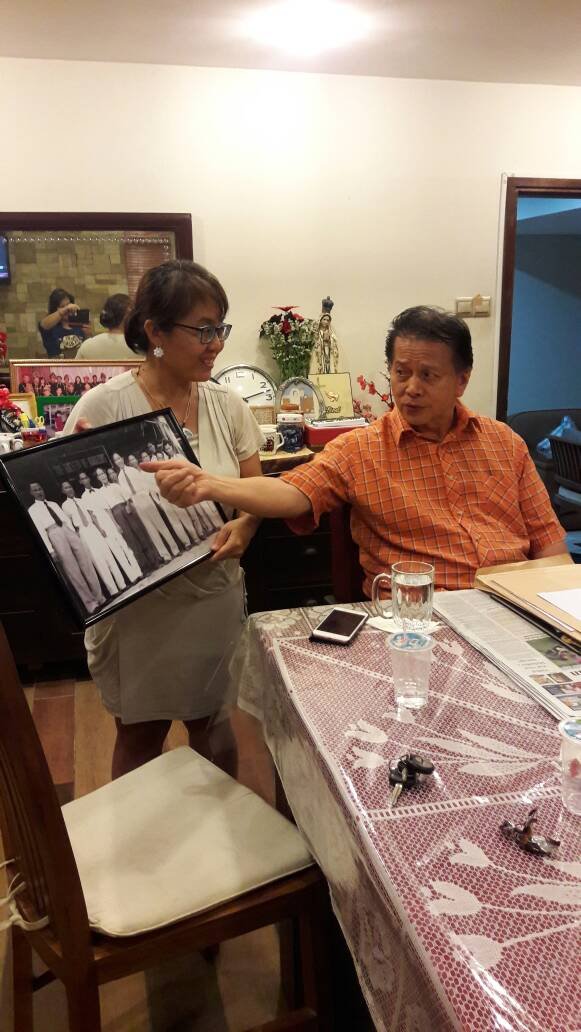
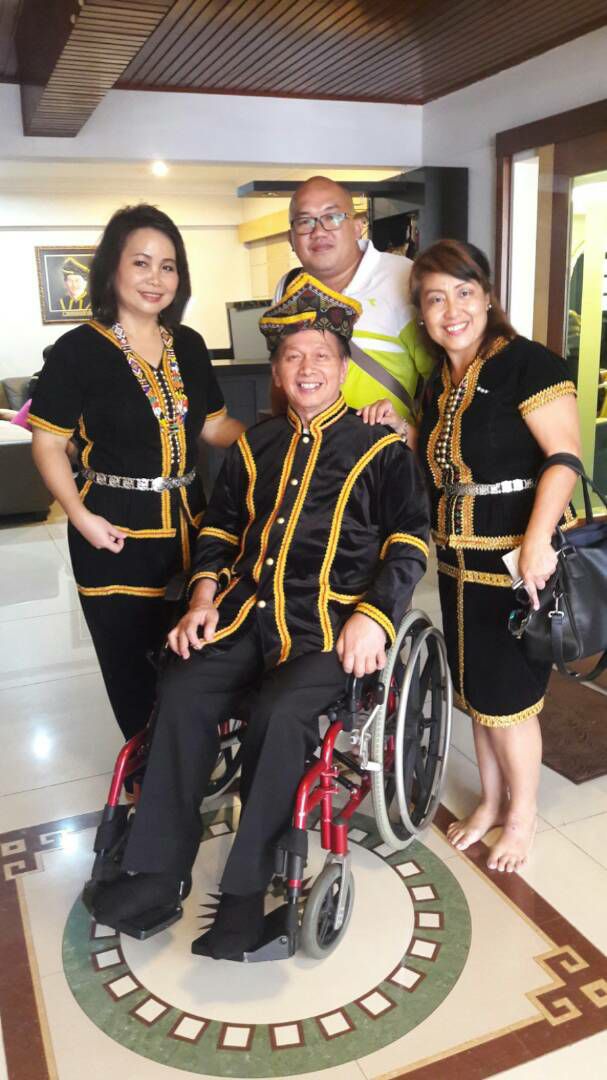
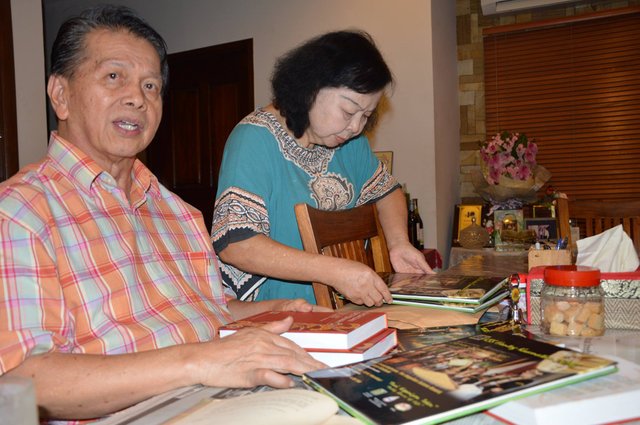
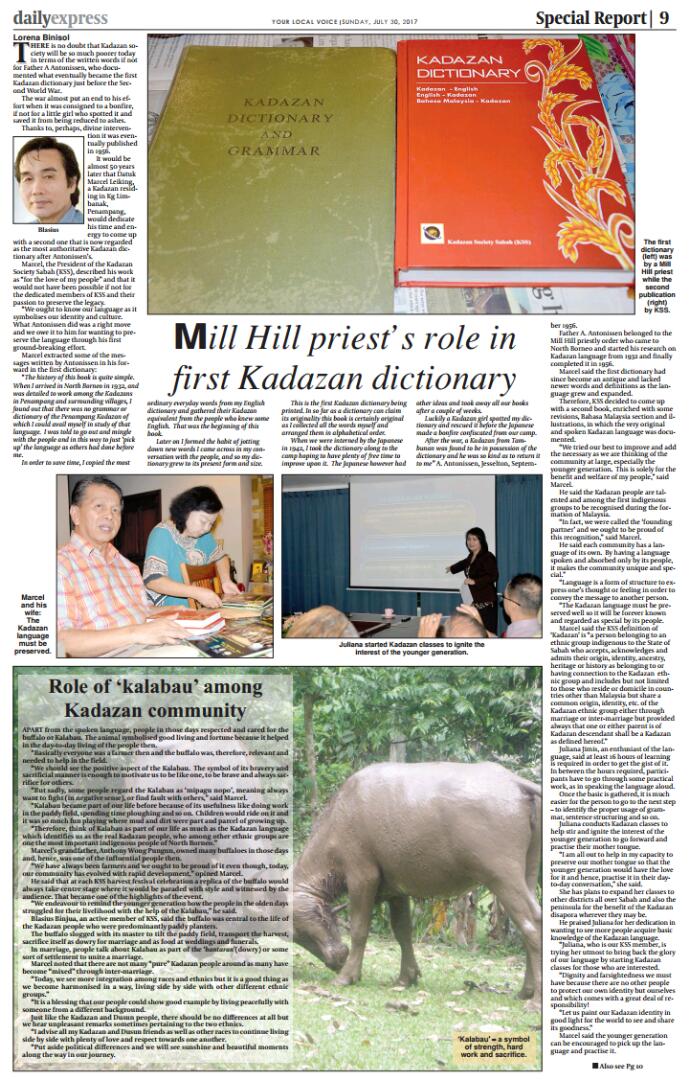
%20written%20by%20a%20Mill%20Hill%20Priest%20and%20second%20publication%20(right)%20written%20by%20the%20KSS.jpg)
What great information ... And now it would be permenant written in the blockchain / the world wide web ! Thanks for sharing
Thanks!!!! It is indeed. Thanks for upvoting me. .. Thankss
Keep doing what you are doing @lorenabinisol. The world needs to reach out more of these contents.
Thanks madeve! You are my inspiration...